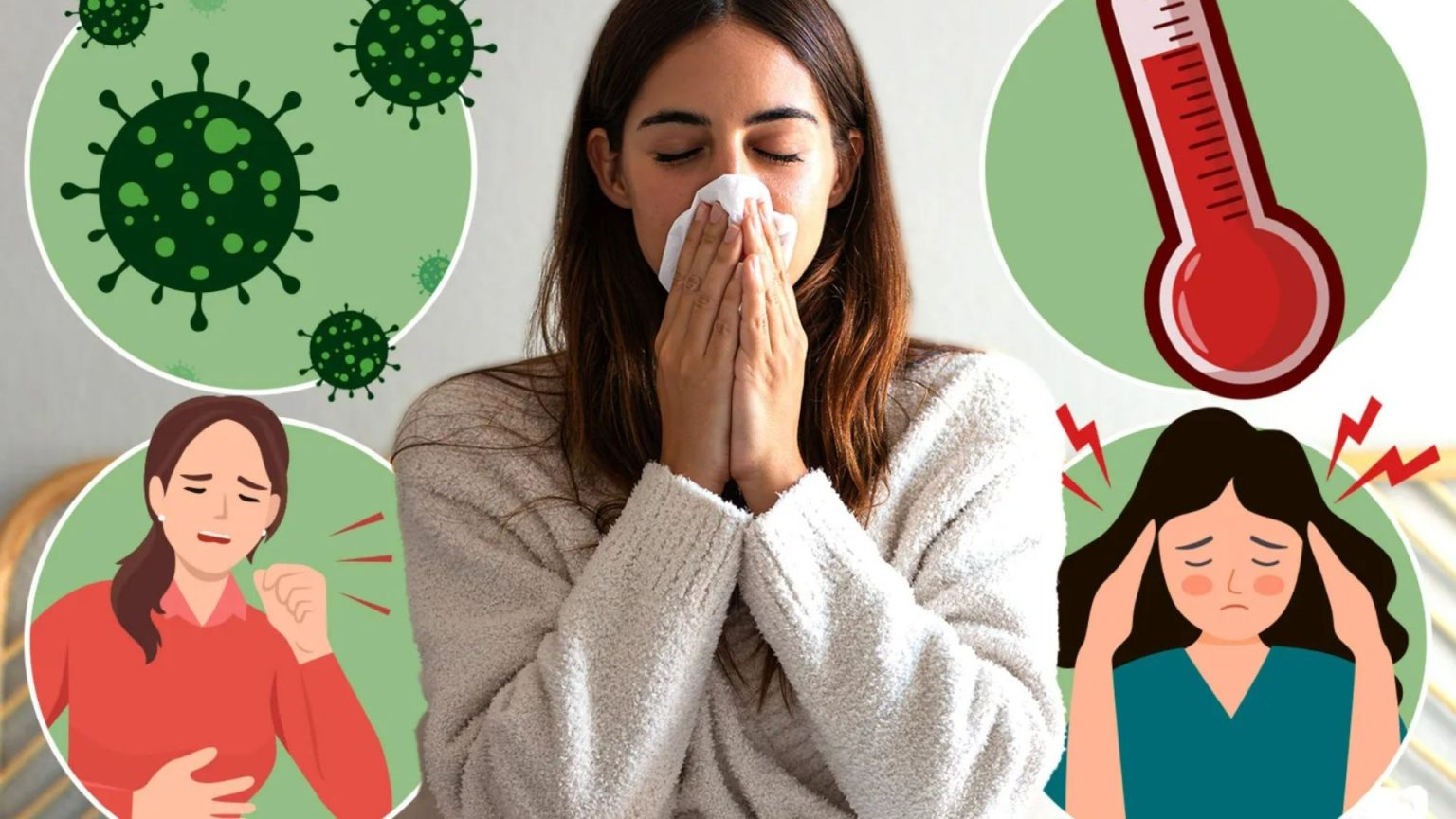The UK is currently experiencing a surge in winter illnesses, placing significant strain on the National Health Service (NHS). This “quad-demic” involves a concurrent rise in cases of influenza (flu), COVID-19, respiratory syncytial virus (RSV), and norovirus. Flu hospitalizations have seen a marked increase, with thousands of patients requiring inpatient care, including a substantial number in critical care. This surge coincides with rising numbers of COVID-19, norovirus, and RSV infections, exacerbated by the onset of colder weather. Adding to this complex situation, human metapneumovirus (hMPV) has been identified as a contributing factor to increased illness and hospital overcrowding, particularly in China. While hMPV is not a new virus, its resurgence underscores the challenges posed by multiple respiratory illnesses circulating simultaneously. The overlapping symptoms of these illnesses create difficulties in distinguishing between them, adding to the complexity of diagnosis and treatment.
The array of respiratory viruses circulating this winter share similar symptoms, making accurate self-diagnosis challenging. Human metapneumovirus (hMPV) presents with symptoms like a runny nose, fever, sore throat, cough, and difficulty breathing, particularly affecting children, older adults, and individuals with compromised immune systems. Respiratory syncytial virus (RSV) also mimics cold-like symptoms, including a runny nose, cough, sneezing, fatigue, and fever. While RSV primarily affects young children, posing a higher risk of severe illness in infants under six months, it generally causes mild symptoms in most individuals. The similarity in symptoms across these viruses underscores the importance of seeking professional medical advice when experiencing respiratory illness, especially for vulnerable populations.
Influenza, commonly known as the flu, shares symptoms with hMPV and RSV but tends to manifest more severely. Flu symptoms typically include fever, body aches, fatigue, dry cough, sore throat, headache, difficulty sleeping, loss of appetite, and sometimes gastrointestinal issues like diarrhea and vomiting. The presence of fever, a key indicator of flu, helps distinguish it from the common cold. COVID-19, another prevalent respiratory illness, also exhibits overlapping symptoms with flu, including cough and shortness of breath. However, COVID-19 symptoms often persist for a longer duration compared to the flu. Common COVID-19 symptoms include fever, cough, fatigue, and loss of taste or smell, with less common symptoms encompassing sore throat, headache, body aches, diarrhea, skin rash, and eye irritation. Distinguishing between flu and COVID-19 can be challenging based on symptoms alone, making testing a crucial tool for accurate diagnosis.
The convergence of these respiratory illnesses emphasizes the importance of preventive measures and appropriate healthcare-seeking behavior. Vaccination remains a critical tool in mitigating the severity of flu, COVID-19, and RSV. Individuals eligible for these vaccines, particularly the elderly, pregnant women, and those with underlying health conditions, are strongly encouraged to get vaccinated to reduce the risk of severe illness and hospitalization. Maintaining good hygiene practices, such as frequent handwashing with soap and water for at least 20 seconds, and disinfecting surfaces with bleach-based products, are essential for preventing the spread of these viruses.
Limiting close contact with others, particularly when experiencing respiratory symptoms like cough, sore throat, and fever, is crucial to minimize transmission, especially to vulnerable individuals. Avoiding crowded places or wearing a face mask in such settings can further reduce the risk of spreading infection. These simple yet effective measures can significantly contribute to curbing the spread of winter illnesses and protecting individuals and communities from their impact.
The ongoing challenge posed by the “quad-demic” calls for continued vigilance and proactive health measures. By adhering to recommended guidelines, individuals can contribute to protecting themselves and others from these circulating viruses. Seeking prompt medical attention when symptoms worsen or persist is vital for appropriate diagnosis, treatment, and management of these illnesses, especially in high-risk groups. The combined efforts of individuals and healthcare professionals are essential in navigating this surge in winter illnesses and minimizing their impact on public health.











